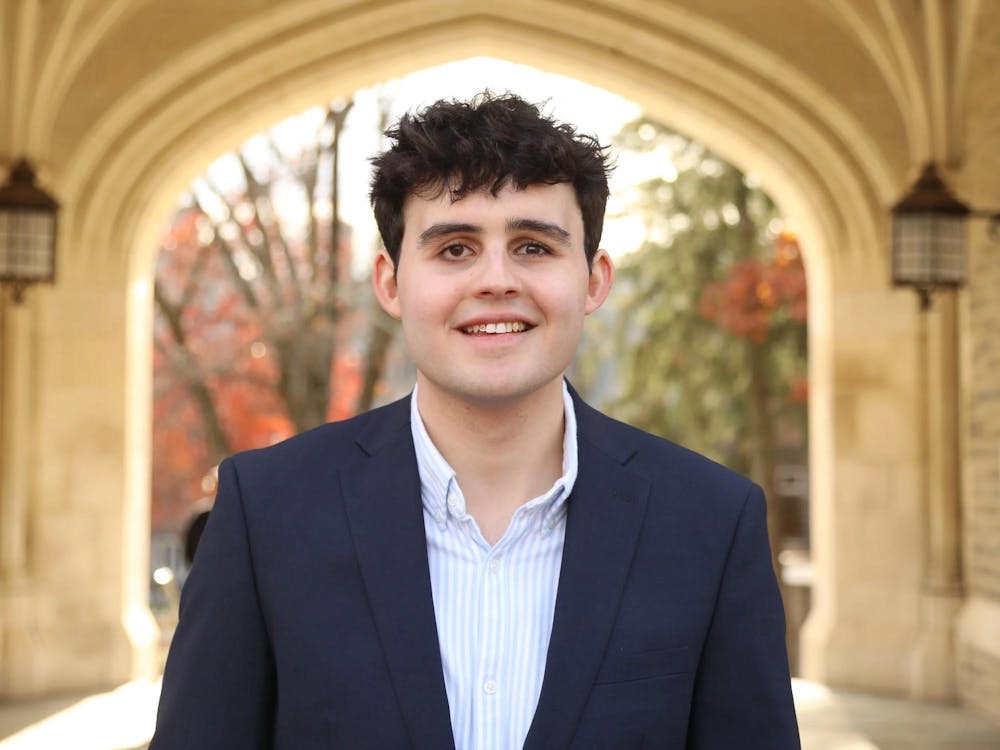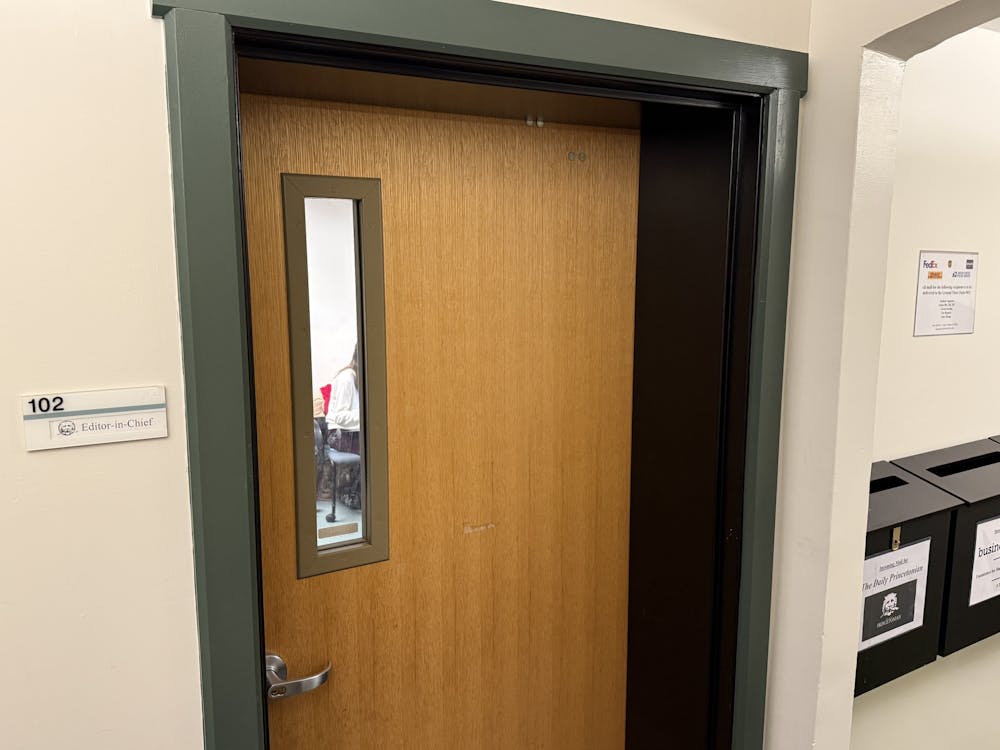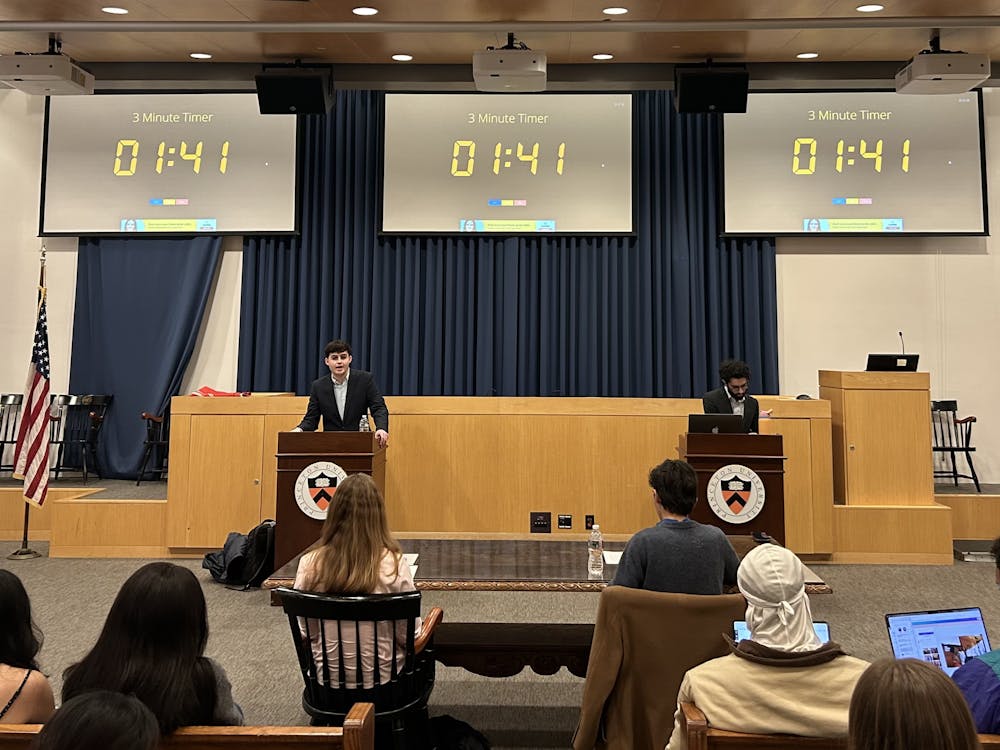Yannis Behrakis, a Pulitzer Prize-winning photojournalist, covered wars and crises for over three decades. But this time was different: a refugee crisis was now happening in his home country, Greece.
“Suddenly,” he said, “this crisis came to me and this was very different. Behrakis had initially expressed worry over whether Greece would welcome refugees given its own internal social, economic, and political problems.
“I was scared, he said. “I thought people would not be able to show humanity, but once again, I’ve always said, humanity thrives through crisis.”
Four experts, including Behrakis, gathered yesterday to discuss the global refugee crisis and the media. The event was organized in response to President Trump’s announcement that his administration would be capping the flow of refugees into the United States at 45,000, the lowest number since Congress began setting refugee limits in 1980. Another panelist, Deborah Amos, a Ferris Professor of Journalism and NPR correspondent, noted that now is a “time when the citizen is overwhelmingly favored over the stranger.”
Behrakis spoke about struggles he had witnessed back in Greece. Previously, he noted, refugees often came to Greece via Turkey, but since Turkey has agreed to take back refugees sent to Greece in March 2016, they now mainly start from Libya, travel through the Mediterranean Sea, and arrive on the coast of Italy.
“The problem with new path is that it’s very, very long,” Behrakis said. “Something like 200 miles. And when you do this with a raft or dinky at maybe 3 miles per hour, it’s impossible.”
Behrakis stated that over 5,000 people have died in the last year.
After speaking, Behrakis showed a slideshow of photographs he had taken while witnessing the refugee migration crisis from 2015 to 2017. His photos showed wide-ranging aspects of refugee life: fathers with backpacks running with their children, people sardined in flimsy inflatable boats in the middle of the sea, and migrants huddled in tents and blankets.
Ferris Professor of Journalism Joe Stephens, who has taken his journalism students to Greece to report on the refugee crisis multiple times, also spoke on the changes he saw in Greece. The first time his class arrived in Greece during the spring of 2016, he noticed tens of thousands of refugees, particularly on the island of Lesbos. People squatted in buildings and slept on the street.
Stephens praised the Greek community for coming together in the face of this crisis.
“Many of the big NGOs were coming, but you also had wonderful tradition in Greece of solidarity groups where community just filled the void,” noted Stephens. He recounted trucks coming to the streets and hanging out food, sanitary pads, and toys. “This shouldn’t have worked at all. Imagine tens of thousands of migrants just started living in Penn station. It was kind of magical to see,” he said.
During later trips, however, Stephens noticed a sizable decrease in the number of refugees in Greece, due to the deal that had taken place between Turkey and the European Union. When he returned to Greece this past summer, he observed that everything felt much “sadder.” There were fewer refugees in public spaces, and people seemed less hopeful.

“They want to work, they want to start rebuilding their lives,” he said. The majority of refugees wanted to leave Greece and elsewhere in Europe, according to Stephens, but the shut-down borders have barred them from doing so. “If you’re living in a camp for over a year,” he said, “that’s going to wear on you.”
The international reception to refugees was a main focus of yesterday’s panel. Amos spoke on Trump’s anti-refugee actions as an attempt to “gut” the nation’s resettlement infrastructure.
“It struck me this week that refugees have no lobby,” she said. She compared the difference between the media narrative of DACA recipients and that of refugees. She opined that DREAMers may be relatively easy to sympathize with given that they are portrayed as “practically American citizens”: English-speaking, educated, and often holding professional jobs.
“They do have a lobby, and there’s sympathy for them,” she said. “They have a narrative. We know their names and we know their stories.
In contrast, however, Amos noted that “refugees are a statistic. One refugee is a tragedy; two is a statistic,” she said. “Many of [the refugees in Europe] are middle class. They would be your friends in another context. They’re professionals. They were forced from their homes, but they’re faceless. In some ways, Donald Trump was right when he said on the campaign trail, ‘We don’t know who these people are.’”
“Sometimes seismic events are hard to see,” Amos said. “You need the personal; you need the narrative. And that is what is missing from the refugee story.”
Amos is taking her journalism class to Canada so that her students can witness private resettlement programs, in part to help humanize refugees for them.
Despite limits of the profession, Behrakis professed his continued belief in journalism’s ability to influence the public conscience and public policy. He recounted an episode he experienced while taking photos in Lesbos. A Norwegian volunteer shouted at him for taking pictures instead of helping the refugees. He replied, “Well, this is the way I help.” She was furious and left. The next day, she returned in tears. “She said, ‘I want to apologize because apparently one of your pictures brought me here.’” The whole audience at the panel discussion laughed.
“People ask me why I’m so devoted. I feel like my mission is to make sure that nobody in the world can say that ‘I didn’t know,’” Behrakis said. “You have no excuse. You cannot say that you didn’t know."
The lecture took place in Robertson Hall at 4:30 p.m. The panel included Ferris Professor of journalism Debra, Amos, Woodrow Wilson School professor Rafaela Dancygier, Ferris professor of journalism Joe Stephens, professor Stanley Katz.







